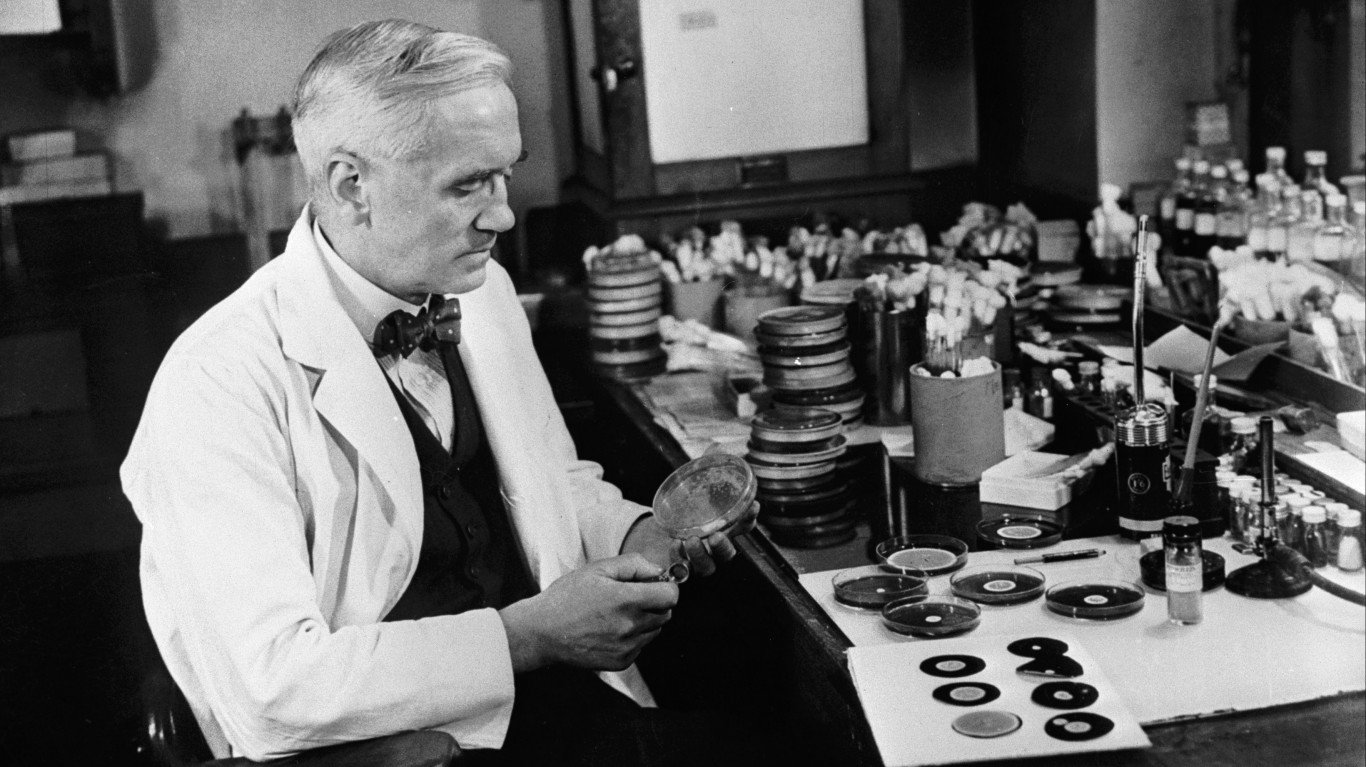

Unless you’re a track and field aficionado, you’ve probably never heard of John Landy. In 1954, the Australian runner set the world record for running the mile, with a time of 3:57. He was the second person to run a sub-four-minute mile, though, so few remember him – while millions know the name of England’s Roger Bannister, who ran the mile six weeks earlier at the slightly slower time of 3:59.4, because Bannister broke the record first.
All through human history, people have endeavored at being the first at something. While some monetary compensation might be an incentive, immortality is just as big a motivator.
To determine some of the most famous firsts in history, 24/7 Tempo drew on resources such as Biography Online, History, Oldest.Org, Science Struck, Science History Institute, sciencehistory.org, the Natural History Museum, Changing the Face of Medicine, and Readers Digest. The resulting list is hardly a complete roster of celebrated firsts, but rather a sampling of highlights over the course of the human experience.
Besides breaking the four-minute mile, some of these famous firsts involve humans pushing themselves to the limits of physical endurance by doing things like climbing Mount Everest, circling the globe on foot, or exceeding the speed of sound.
Among the famous firsts on our list are milestones in discovery such as circumnavigating the world, the publication of the first atlas, and the first observation of the lunar surface (which proved not to look like what the conventional wisdom thought it would).
Click here to see 30 of the most famous firsts in history
Included on the list, too, are achievements in the field of medicine such as the first vaccine, penicillin, and the discovery of DNA. (These are accidental discoveries that changed the world.)
And no list of firsts would be complete without a mention of notable inventions that changed the trajectory of humankind’s journey. They include the telephone, the lightbulb, the radio, the cellphone, and the computer. (Here are some ancient inventions you thought were modern.)

Democracy
> Years: 594-462 B.C.
As we learned in school, the ancient Greeks were the first to create a democratic form of government. The Athenian statesmen Solon (594 B.C.), Cleisthenes (508 B.C.), and Ephialtes (462 B.C.) are credited by most historians for its development.
[in-text-ad]
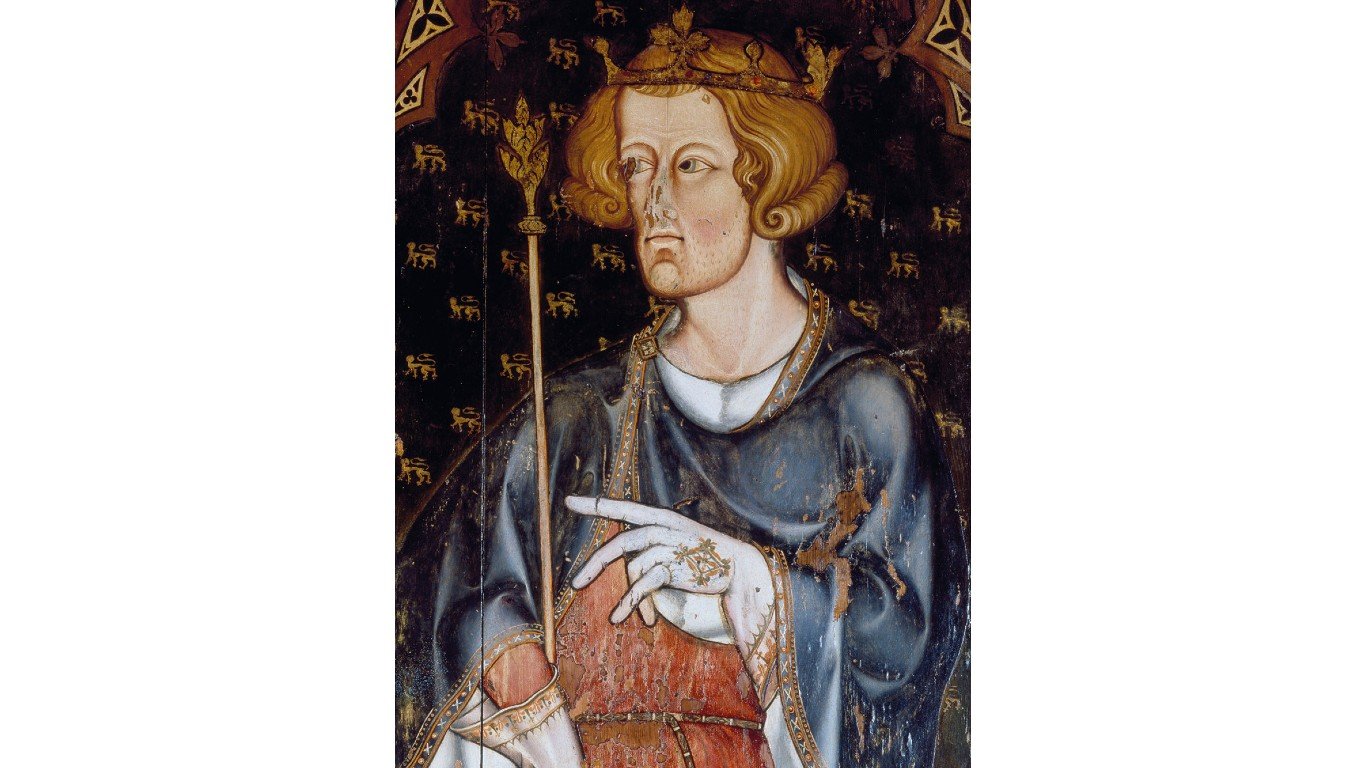
Pollution law
> Year: 1306
Even in the 14th century, London was becoming an environmentally hazardous place – so much so that King Edward I banned coal burning in London because of smog and pollution. The decree had little effect. Even after the king’s successor, Edward II, decreed punishment by torture for those burning coal, people kept using it because they had no other way to heat their homes.
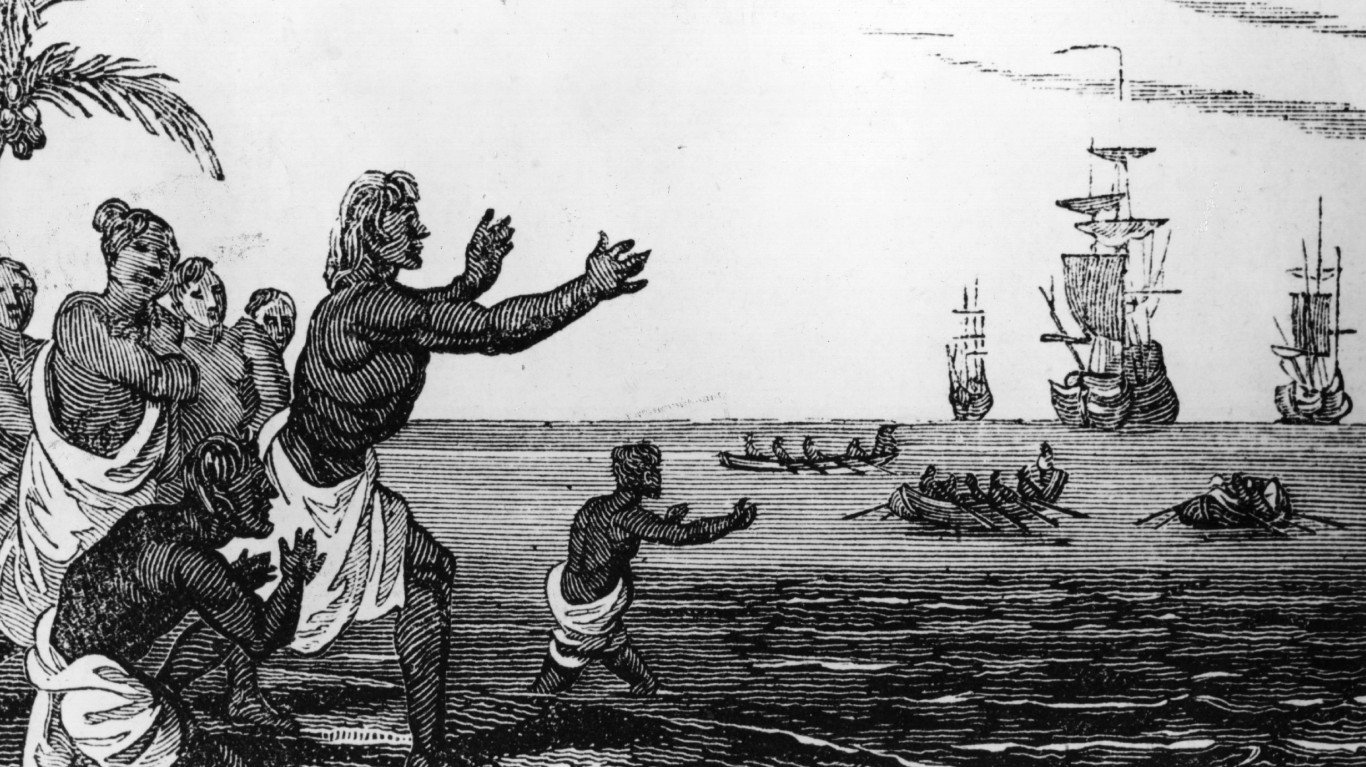
Circling the globe
> Years: 1519-1522
Portuguese explorer Ferdinand Magellan’s crew were the first sailors to complete a circumnavigation of the world by boat. Magellan himself never finished the trip. He was killed in a battle with native people on an island in the Philippines in 1521.
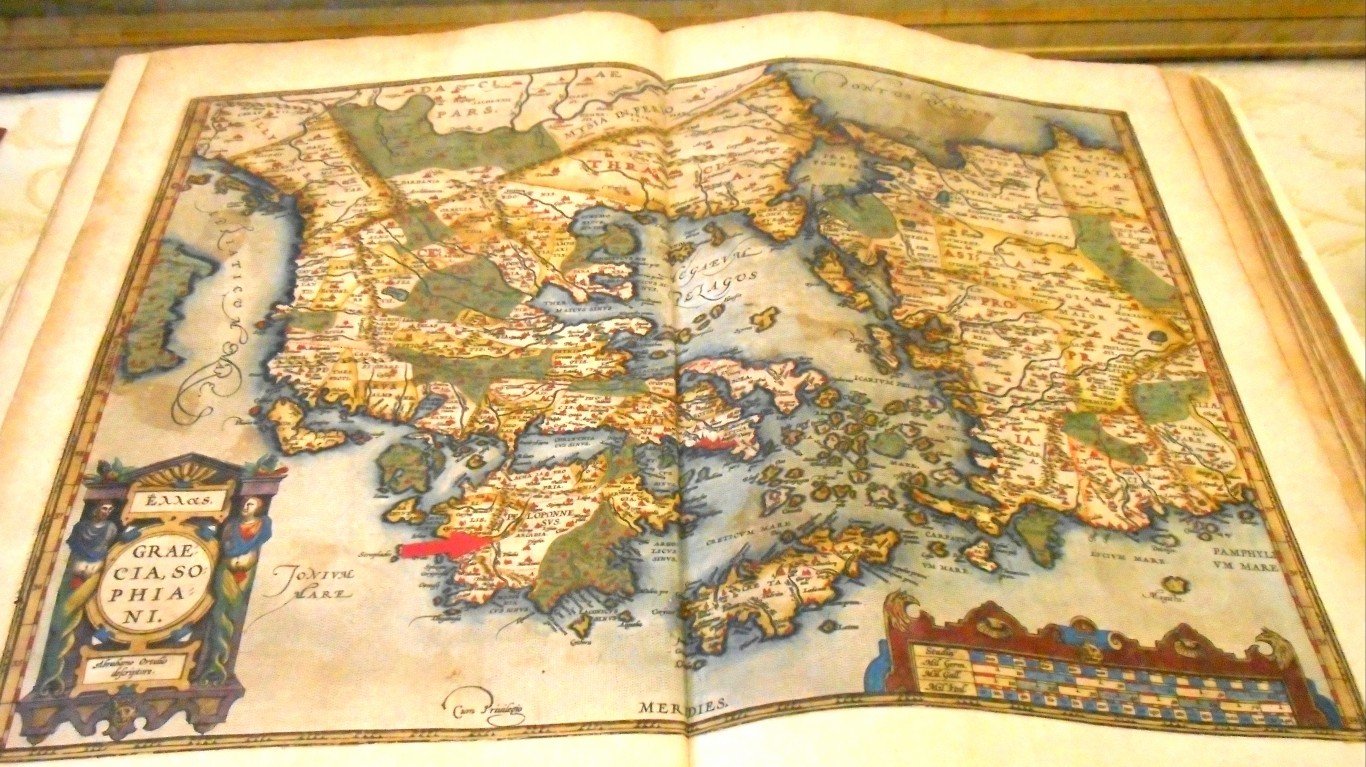
Modern atlas
> Year: 1570
Flemish cartographer Abraham Ortelius published the first atlas, though it was not called that at that time. It was part of a collection of maps titled “Theatrum Orbis Terrarum” (Theater of the World), printed as a 53-page book.
[in-text-ad-2]
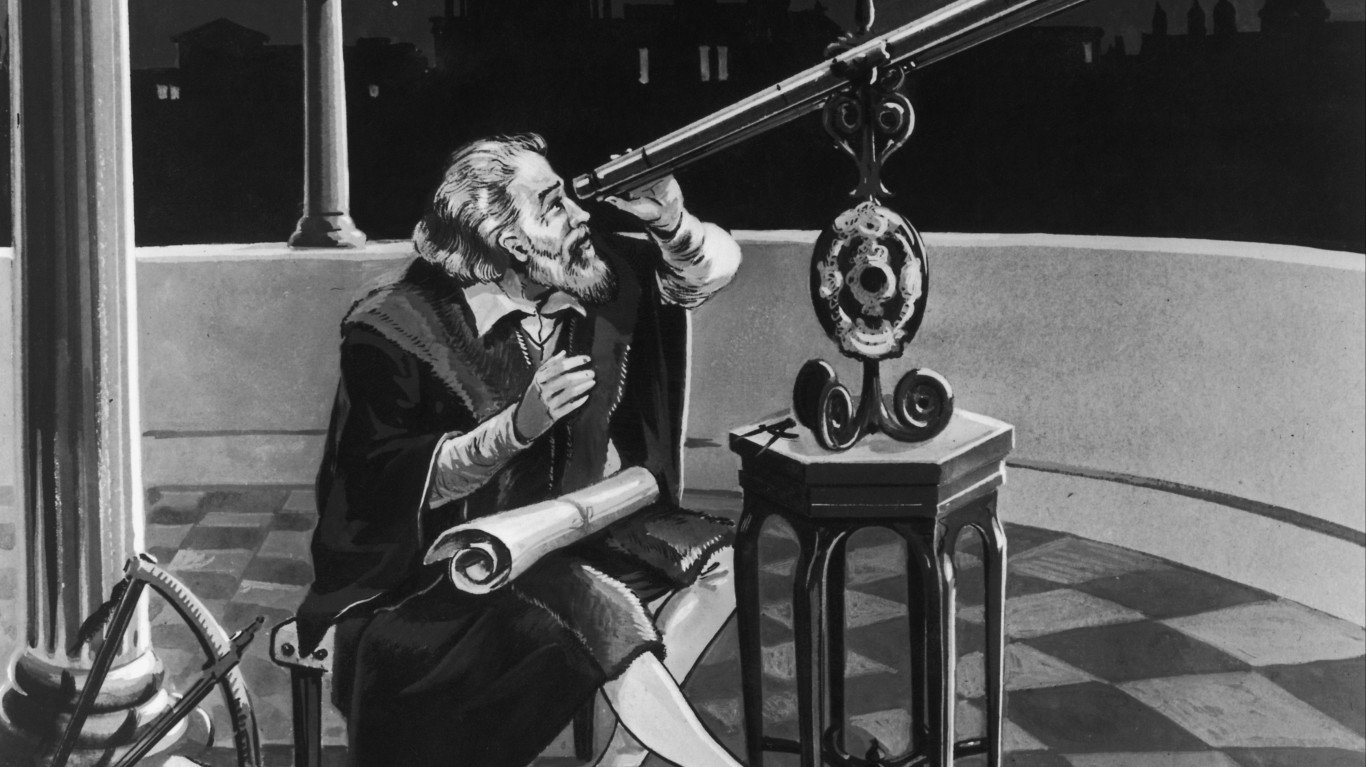
Person to see the moon’s surface
> Year: 1610
Italian astronomer Galileo Galilei became the first person to see the actual lunar surface through a telescope. What he saw – a pock-marked, barren surface – conflicted with the Catholic Church’s notion that God had created the heavens to be perfect. It wouldn’t be the only time his scientific discoveries ran afoul with the Vatican. (Some historians believe that English mathematician Thomas Harriot, who made a small drawing of the moon’s surface, observed it through a telescope himself in 1609, beating Galileo by a year.)
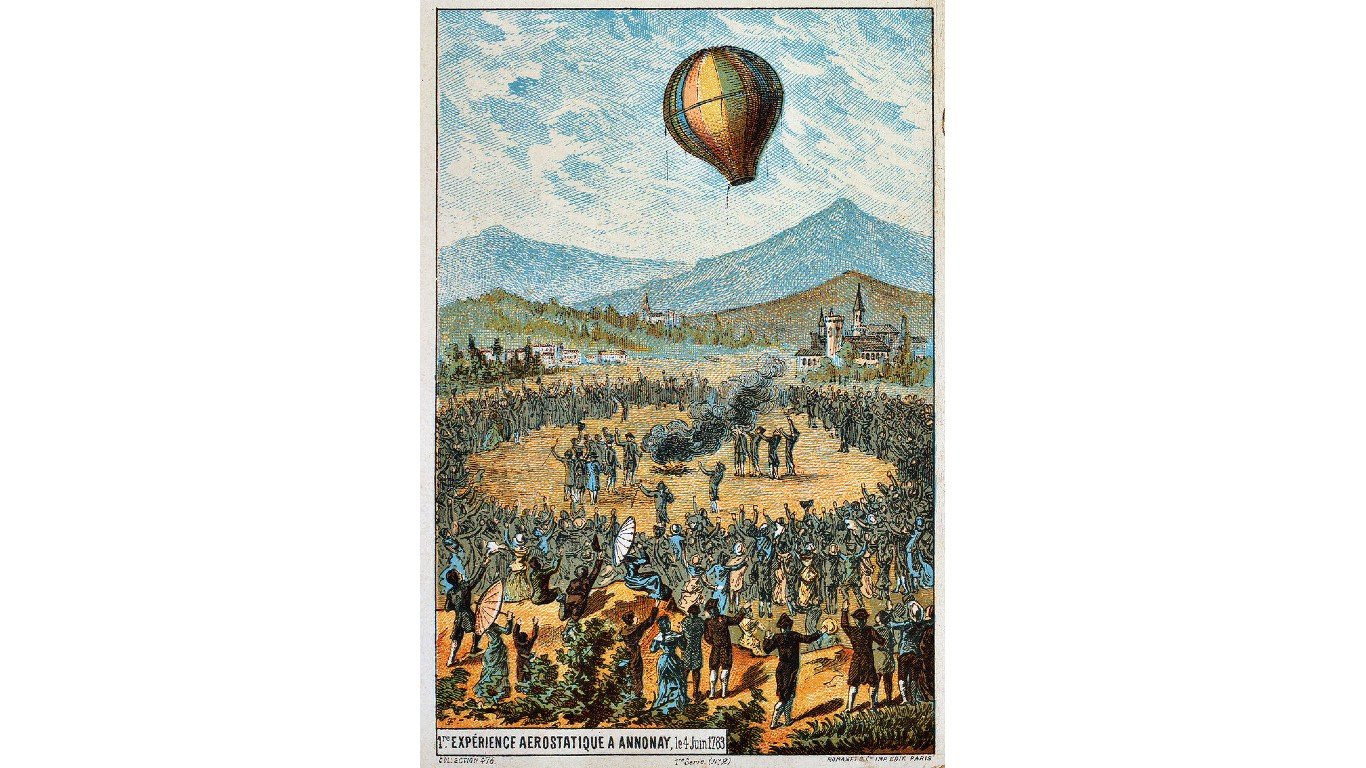
Hot air ballooning
> Year: 1783
François Laurent d’Arlandes and Jean-François Pilâtre de Rozier become the first humans to fly in a hot-air balloon, flying for 25 minutes at an altitude of 3,000 feet over Paris and landing five miles from where it took flight. The balloon was designed by balloon-design pioneers Joseph and Etienne Montgolfier, and the flight was witnessed by Benjamin Franklin, then the U.S. minister (as ambassadors were then called) to France.
[in-text-ad]
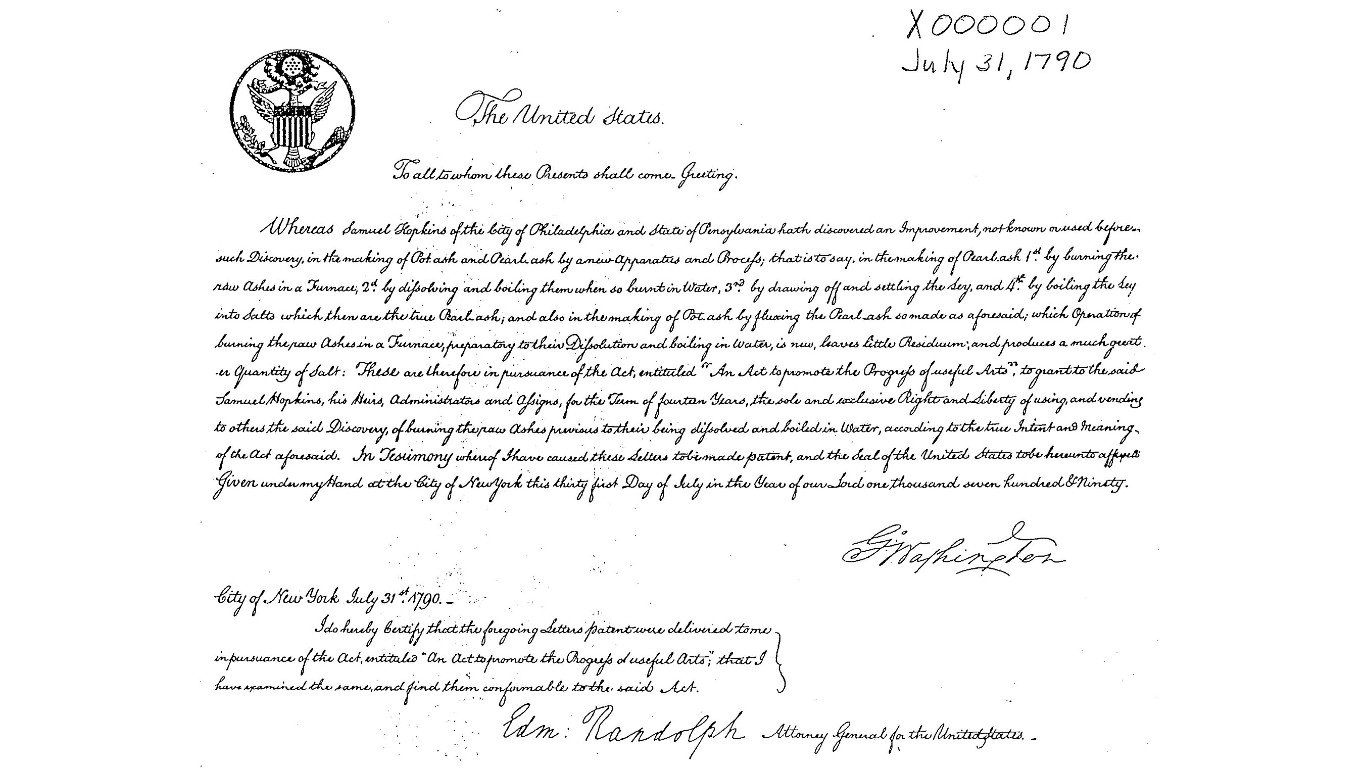
U.S. patent
> Year: 1790
Samuel Hopkins, a Quaker from Philadelphia, became the holder of U.S. Patent #1, a document signed by President George Washington, Secretary of State Thomas Jefferson, and Attorney General Edmund Randolph. Hopkins patented a process for making potash and pearl ash. Potash was used as a fertilizer and as a detergent. Pearl ash was used in glassmaking, to make saltpeter for gunpowder, and as a baking leavening agent.

Vaccine
> Year: 1798
The first vaccine was developed by Edward Jenner to combat smallpox, which had killed around 10% of the population of the United Kingdom in the late 18th century. Jenner became known as the father of immunology and his vaccine led to the development of other treatments. By 1979, the World Health Organization declared smallpox extinct.
Battery
> Year: 1800
Italian physicist Alessandro Volta developed the first true battery, capable of providing a steady current. Volta created what became known as the voltaic pile, constructed of alternating discs of zinc and copper, with brine-soaked pieces of cardboard placed between the metals.
[in-text-ad-2]
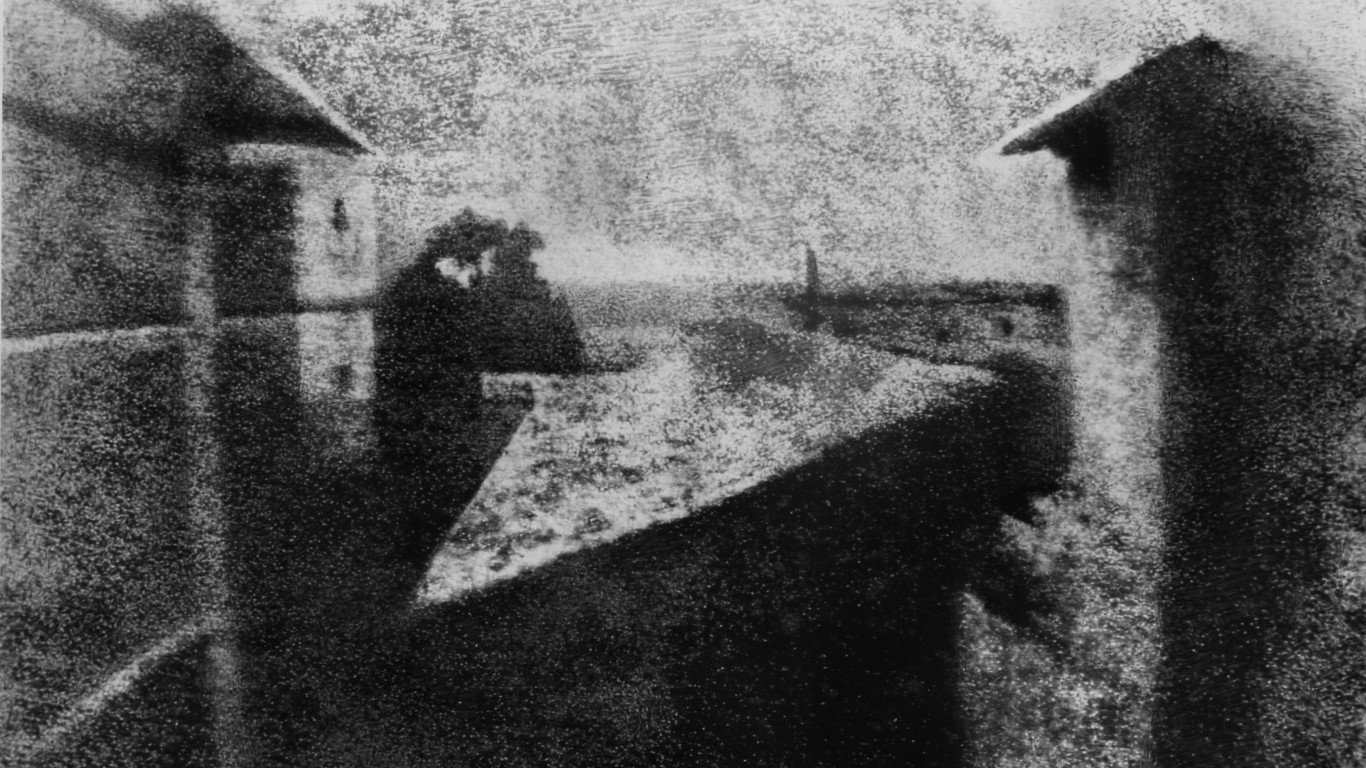
Photograph
> Year: 1826
French photographer Joseph Nicéphore Niépce took what is widely acknowledged to be the first photograph, a grainy image believed to be a view from his window.
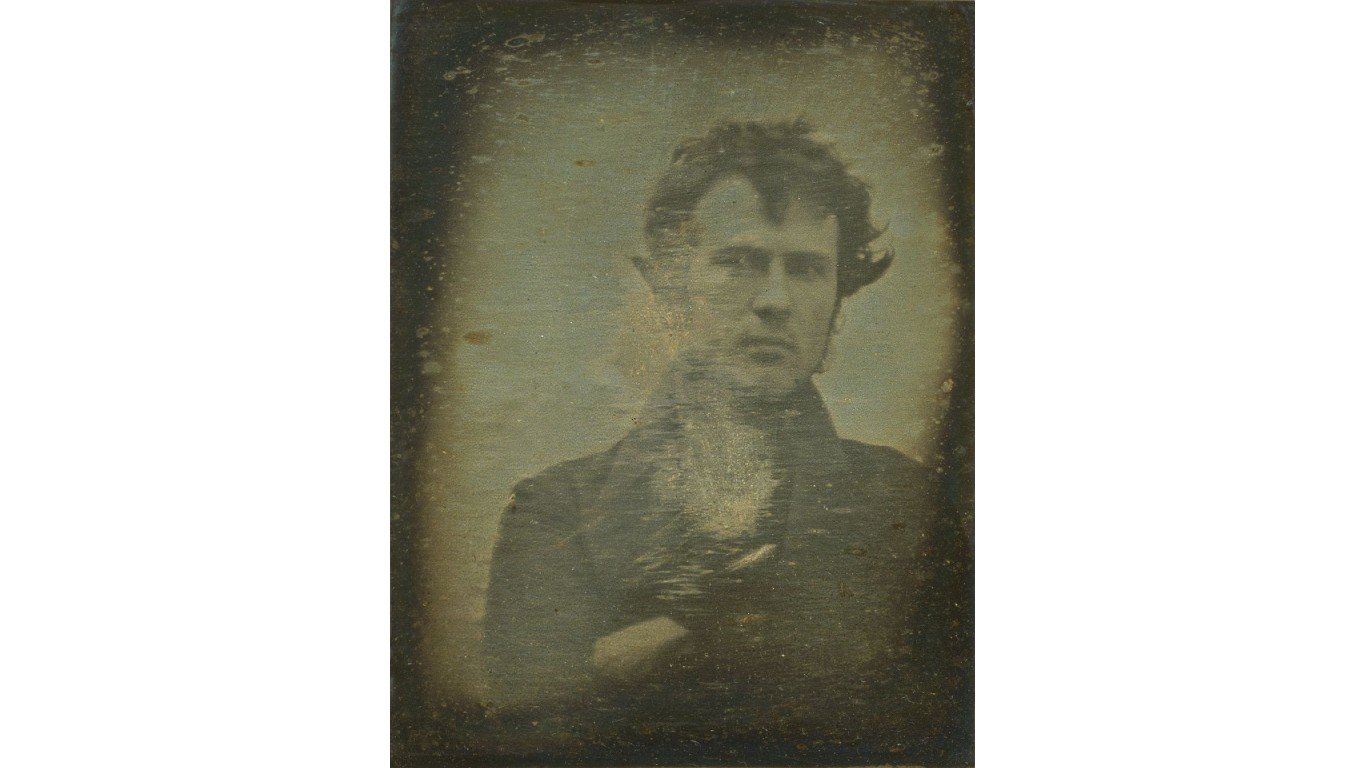
Selfie
> Year: 1839
Selfies have been around a lot longer than you think. The first was made by Robert Cornelius, who, when not working at his parents’ store in Philadelphia, liked to noodle around with inventions. He fitted a lens from an opera glass to his contraption to take the picture. What makes the selfie remarkable is that in those days, the exposure time was up to 15 minutes.
[in-text-ad]
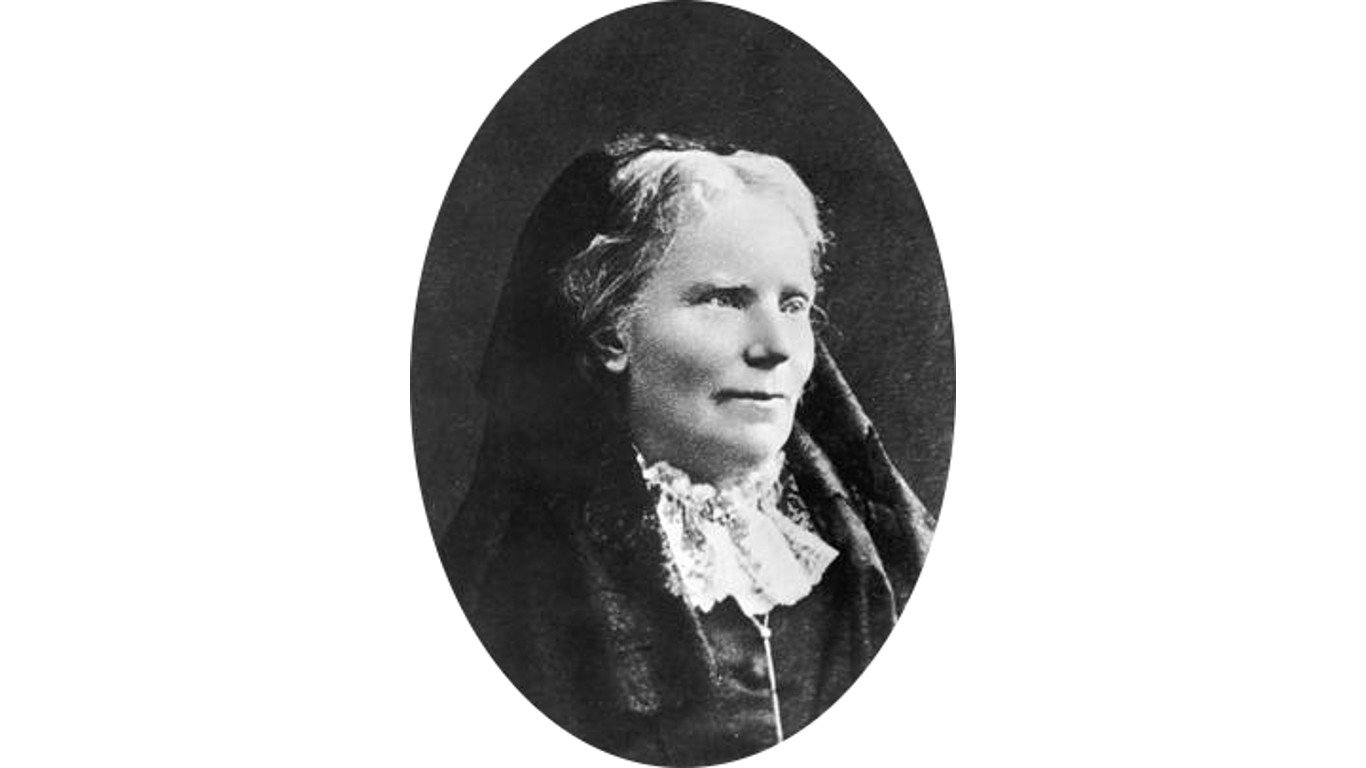
Woman to earn medical degree in the U.S.
> Year: 1849
Dr. Elizabeth Blackwell was the first woman to receive a medical degree from an American medical school when she graduated from New York’s Geneva Medical College. She, her sister Emily (the second woman to get a U.S. medical degree), and Polish doctor Marie Zakrzewska opened the New York Infirmary for Women and Children in New York City in 1857. The institution and its medical college provided training and experience for female doctors and medical care for the poor.

Toilet paper
> Year: 1857
Joseph Gayetty invented the first toilet paper, a forerunner of the item we use today. Gayetty called his invention the “Greatest Necessity of the Age.” Few would disagree. It is not known if Gayetty had a preference for how his invention was mounted.
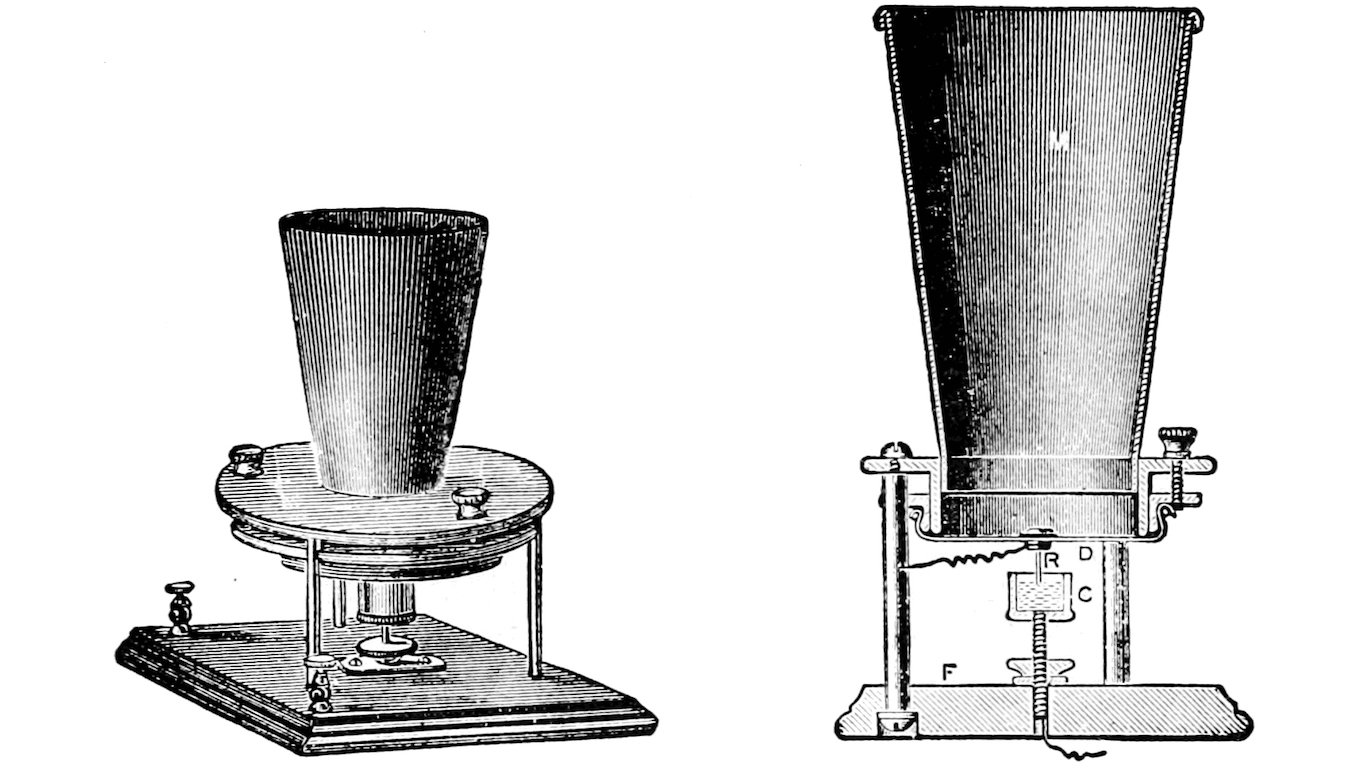
Telephone
> Year: 1876
Alexander Graham Bell is credited with developing the model of the modern telephone, though it was based on many other inventions by scientists. Antonio Meucci, an Italian scientist, also made an early version of the telephone. He did not file for a patent and failed to commercialize his model.
[in-text-ad-2]
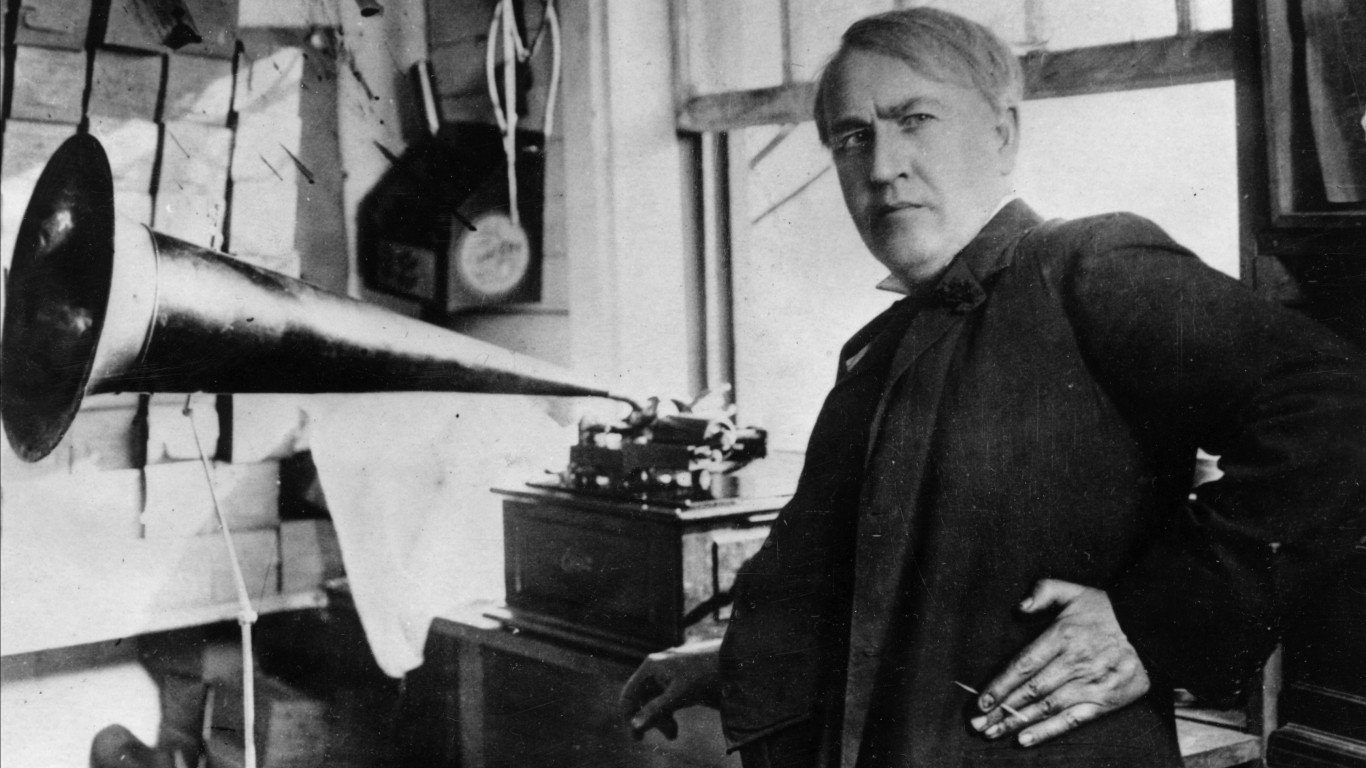
Commercially practical incandescent light
> Year: 1879
Thomas Edison’s lightbulb was the culmination of experiments from other scientists and inventors. His version succeeded because it was the first commercially practical incandescent light. He continued to improve its longevity over the following decade.
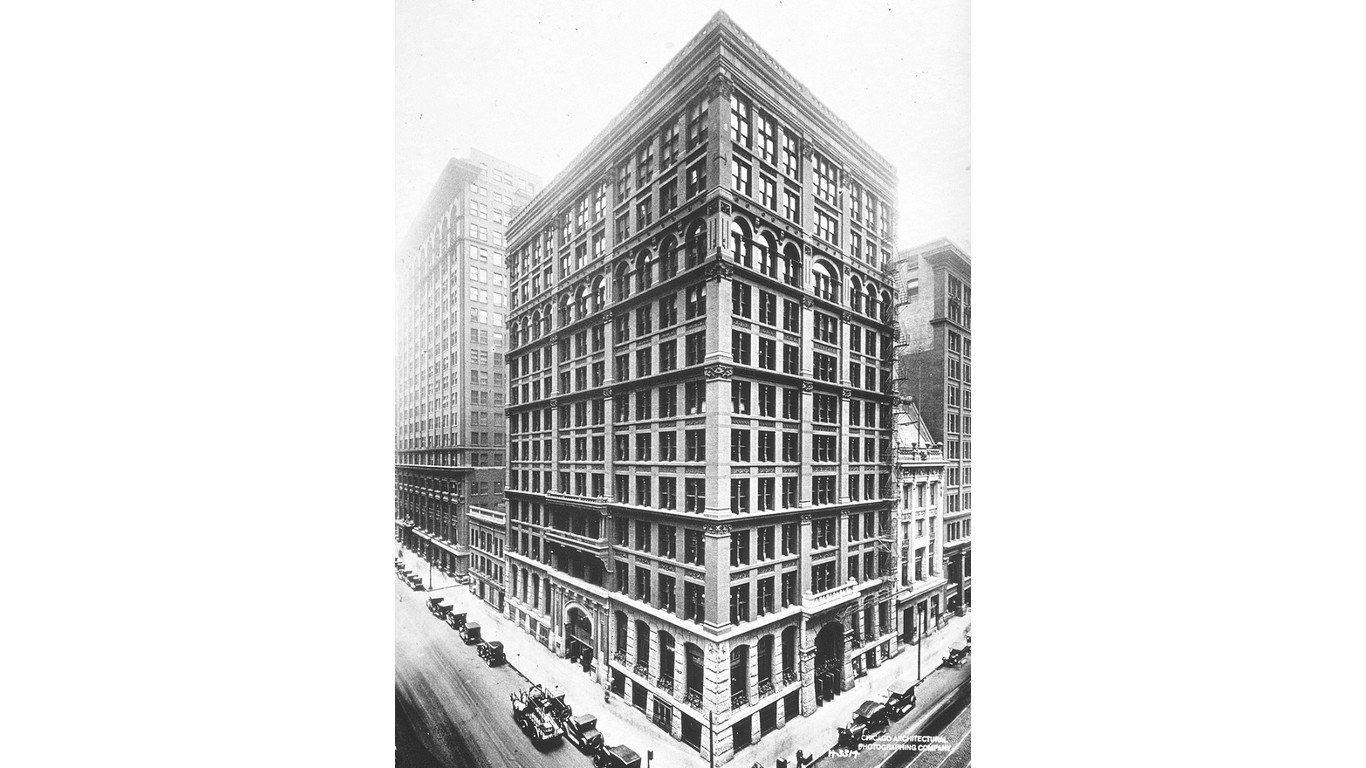
Skyscraper
> Year: 1885
Following the devastating fire of 1871, the city of Chicago was cleared for development, and the skyscraper was born. The first tower was the Home Insurance Building, a 138-foot-tall structure designed by architect William Le Baron Jenney in 1884 and erected the following year in downtown Chicago. It was torn down in 1931.
[in-text-ad]

Commercially available car with an internal combustion engine
> Year: 1885
Though predecessors of the internal combustion engine date back as early as 1791, and though American George Brayton invented the first liquid-fueled example, Karl Benz (later of Mercedes-Benz fame) built and tested the world’s first car powered by an internal gasoline-powered combustion engine. Benz’s three-wheeled automobile carried two passengers, and was distinguished from the transportation concepts of other inventors because it was built around the engine. Benz also invented other car-related components, including the electric ignition, spark plugs, and clutch.
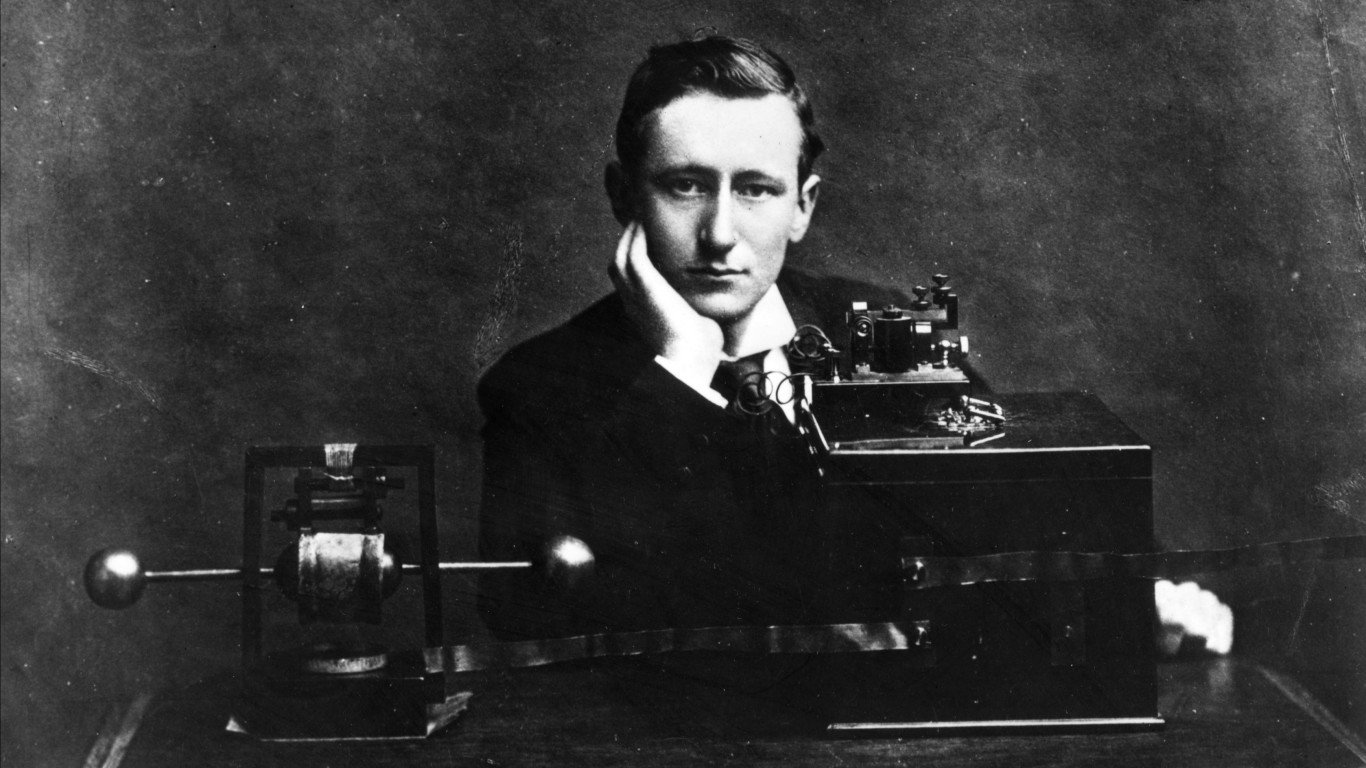
Radio
> Year: 1895
Guglielmo Marconi’s laboratory experiments at his father’s country estate at Pontecchio, Italy, bore fruit, as he succeeded in sending wireless signals over a distance of one-and-a-half miles. A year later, he took his gizmo to England, and the following year he was granted the world’s first patent for a system of wireless telegraphy. Marconi won the Nobel Prize for physics in 1909.
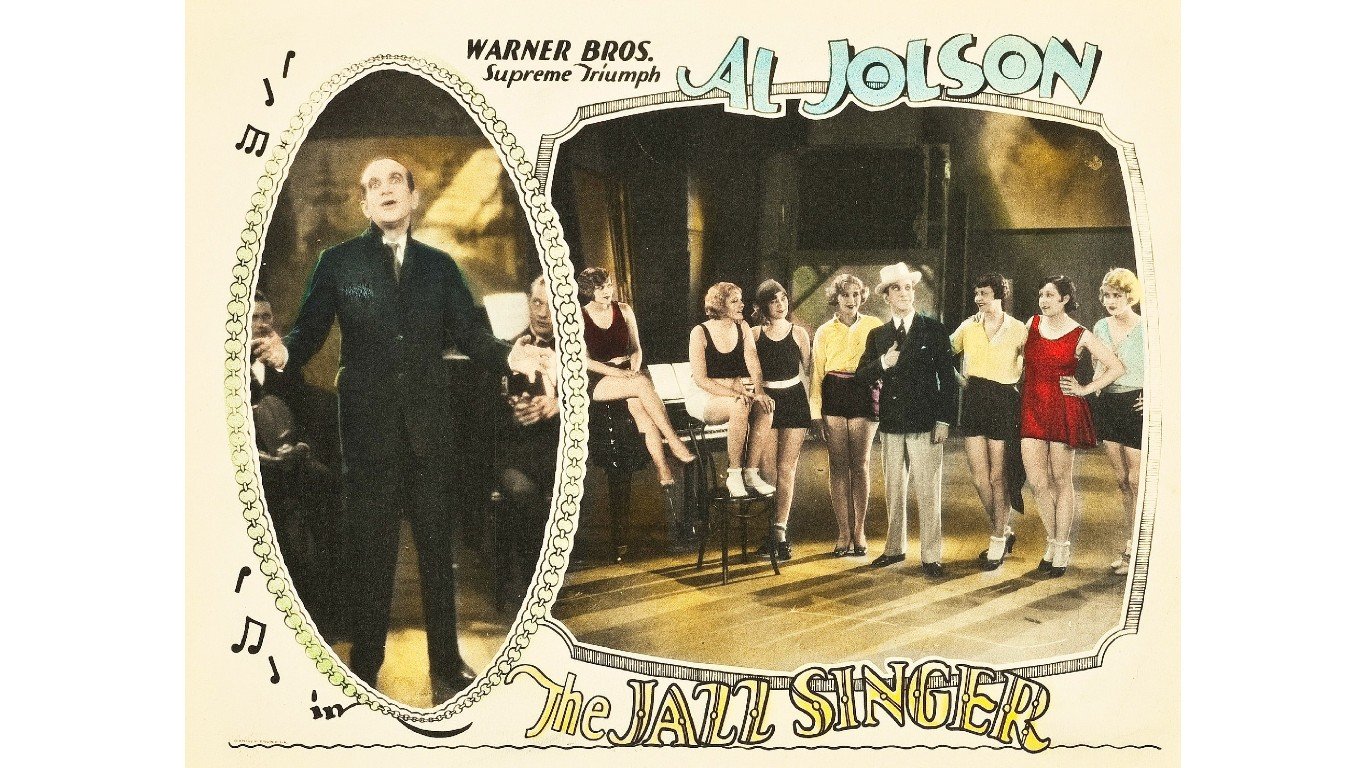
Talking movie
> Year: 1927
“The Jazz Singer” is the first full-length motion picture that included a soundtrack with dialogue. Only one-fourth of the film had sound. That portion included Al Jolson’s famed ad lib, “Wait a minute, wait a minute, you ain’t heard nothing yet!” – the first spoken line in a feature film. It was met with tumultuous applause. The movie was a financial success and made Warner Brothers a major studio. It also ended the careers of many silent-film stars, whose voices were at odds with their on-screen personas.
[in-text-ad-2]
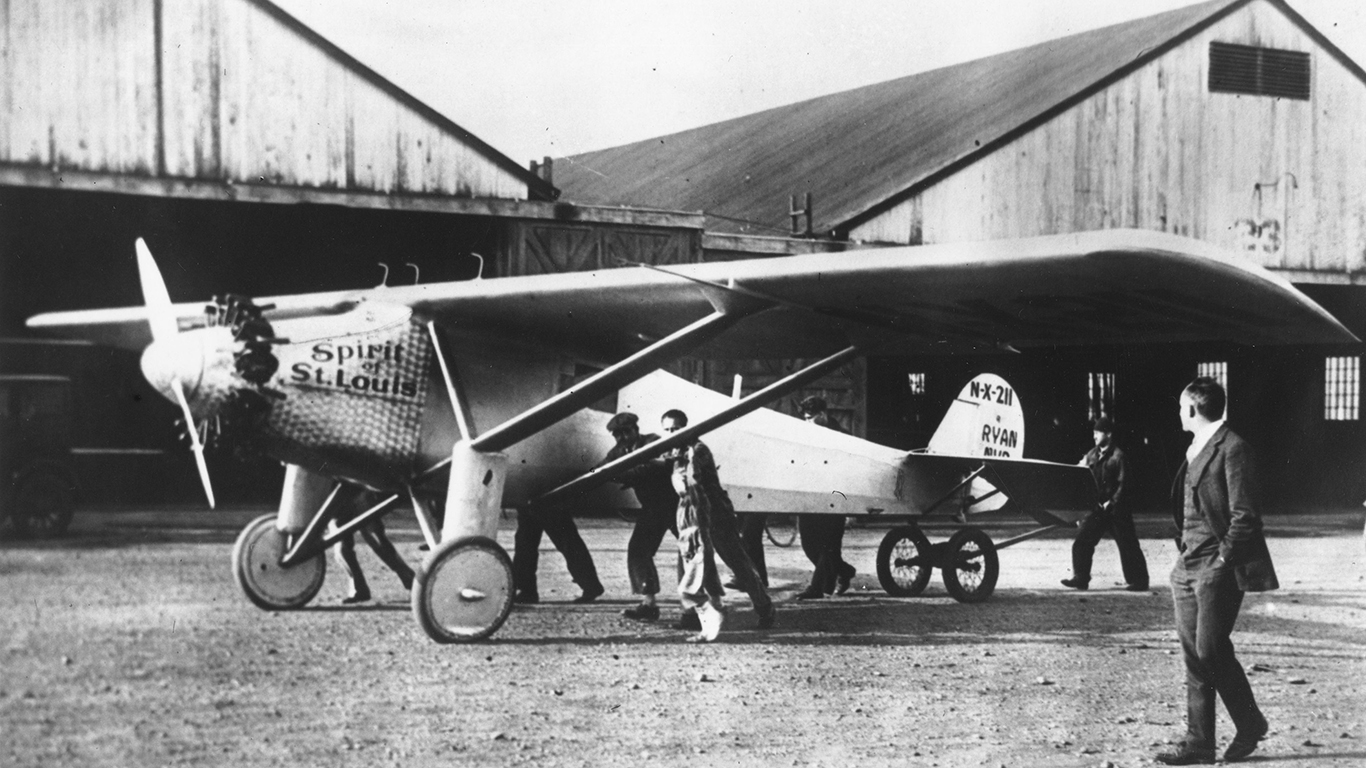
Solo nonstop transatlantic flight
> Year: 1927
The same year a talking movie changed the industry forever, Charles Lindbergh became the first person to fly an airplane solo nonstop over the Atlantic Ocean, soaring from Long Island to Paris. The flight covered 3,500 miles and took 33 hours and 30 minutes. Lindbergh’s feat received far more media attention than the first two-person transatlantic flight in 1919 by John Alcock and Arthur Brown. They flew to Ireland from Newfoundland in Canada.

Antibiotic
> Year: 1928
Scottish physician and scientist Alexander Fleming discovered penicillin, which has antibiotic properties. Fleming, along with Howard Florey and Ernst Chain, who created methods for isolation and production of penicillin, won the Nobel Prize in Physiology/Medicine in 1945.
[in-text-ad]

First American programmable electronic digital computer
> Year: 1945
Historians trace the idea of a programmable computer back to English mechanical engineer Charles Babbage in the early 19th century, and there were analog and then digital computers developed in the first decades of the 20th, culminating with Colossus, developed by the English during World War II. A significantly faster digital computer was being developed meanwhile at the University of Pennsylvania by John Mauchly and J. Presper Eckert, who began working on it in 1942 for the U.S. military. Three years later, they completed construction of the ENIAC, the Electronic Numerical Integrator And Computer. The computer was declassified in 1946 and was the subject of an article in the New York Times. Until it was struck by lightning in 1955, ENIAC probably ran more calculations than humans had ever done.
Flying faster than speed of sound
> Year: 1947
Chuck Yeager was the first person to fly faster than the speed of sound when his experimental aircraft the Bell X-1 rocket flew 700 mph in level flight in October 1947. When asked about his accomplishment, the World War II flying ace and author of “The Right Stuff” said “I didn’t look at [the sound barrier] as a barrier. I looked at it as a mission.”
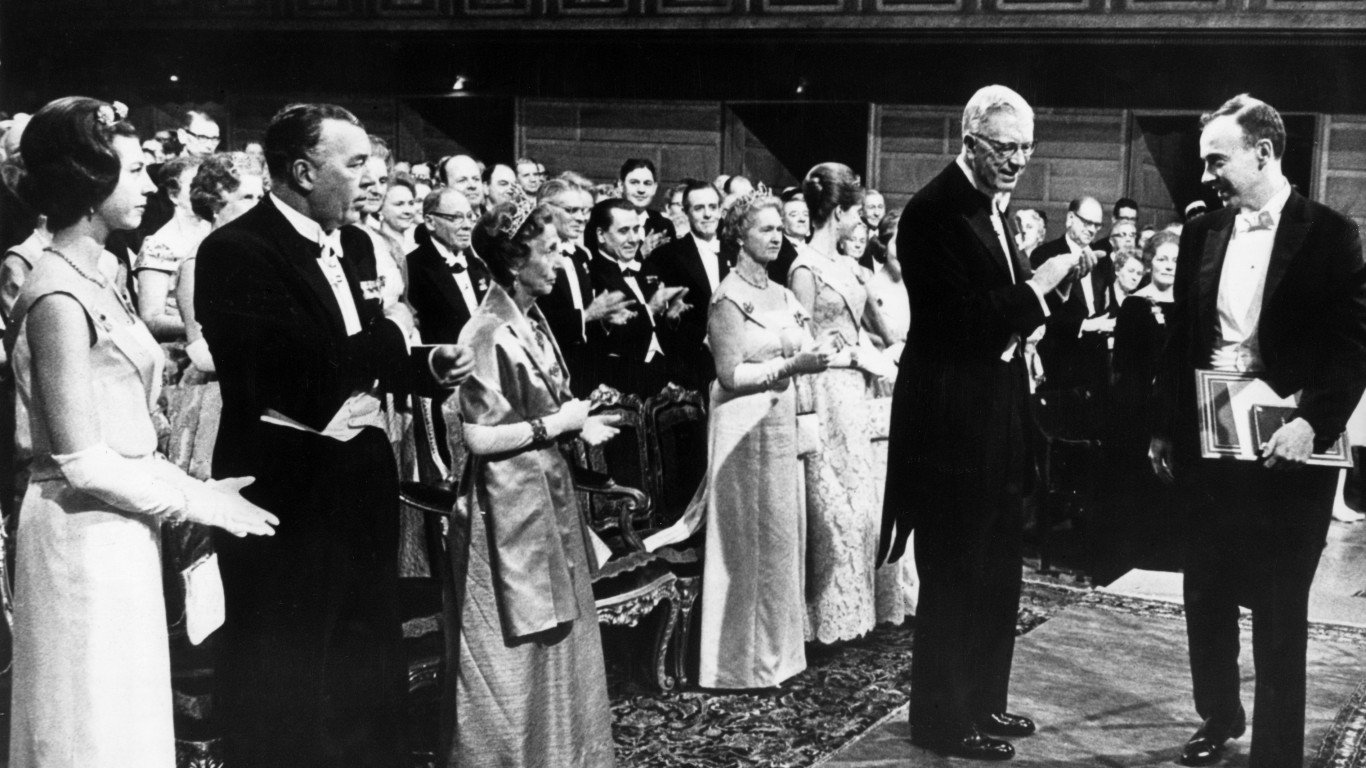
Revealing DNA structure
> Year: 1953
In 1953, two British scientists revealed the structure of DNA by using X-ray crystallography. Francis Crick and James Watson, who worked together at Cambridge University, were given credit for this discovery, but they only determined the DNA structure because they used English chemist Rosalind Franklin’s unpublished work, without consulting her. Franklin’s key role in discovering DNA would go unrecognized for decades.
[in-text-ad-2]
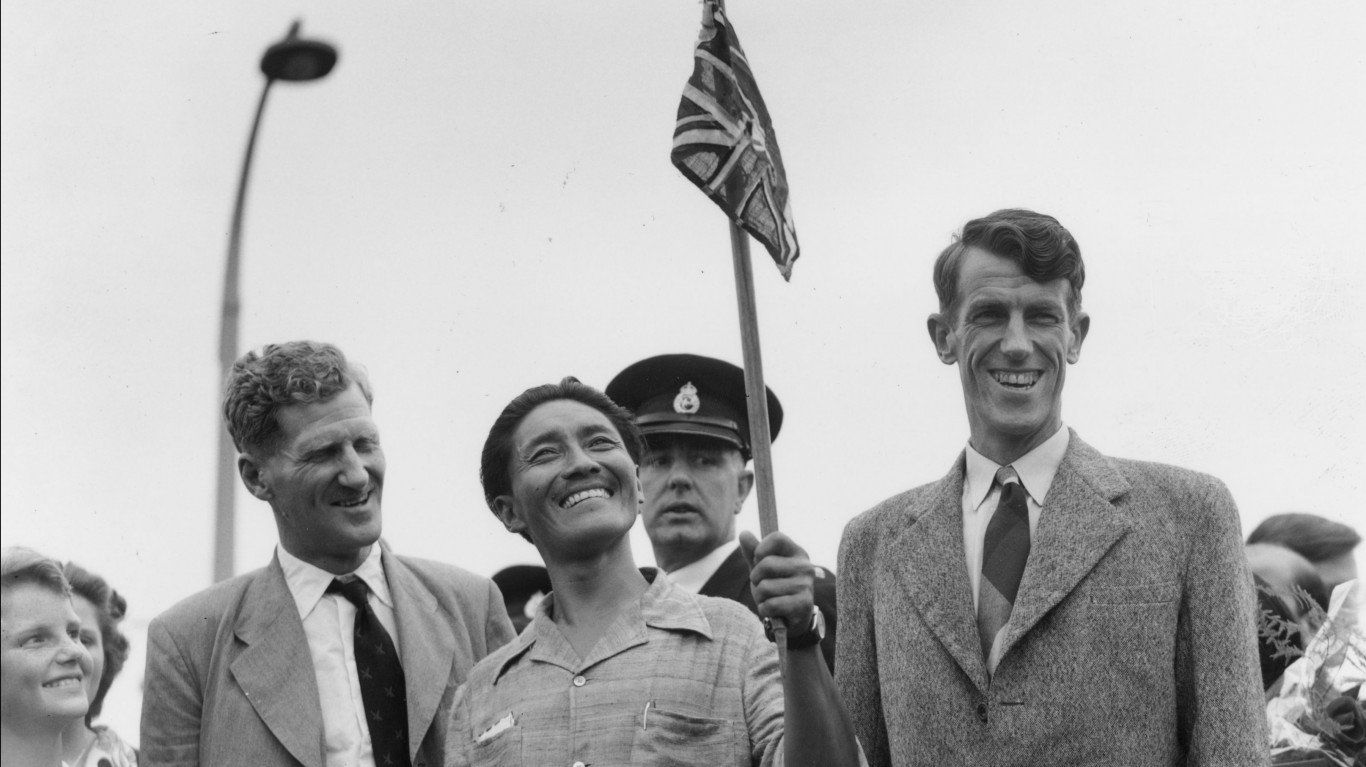
Summiting Mount Everest
> Year: 1953
Sir Edmund Hillary, a beekeeper from New Zealand, and Sherpa guide Tenzing Norgay from Nepal become the first people to climb Mount Everest. They achieved the feat on May 29, 1953. Hillary left a cross at the peak and Norgay left some chocolates. When they returned from the mountaintop, Hillary was made a knight commander of the British Empire. The announcement of his achievement was made when Queen Elizabeth II was crowned.
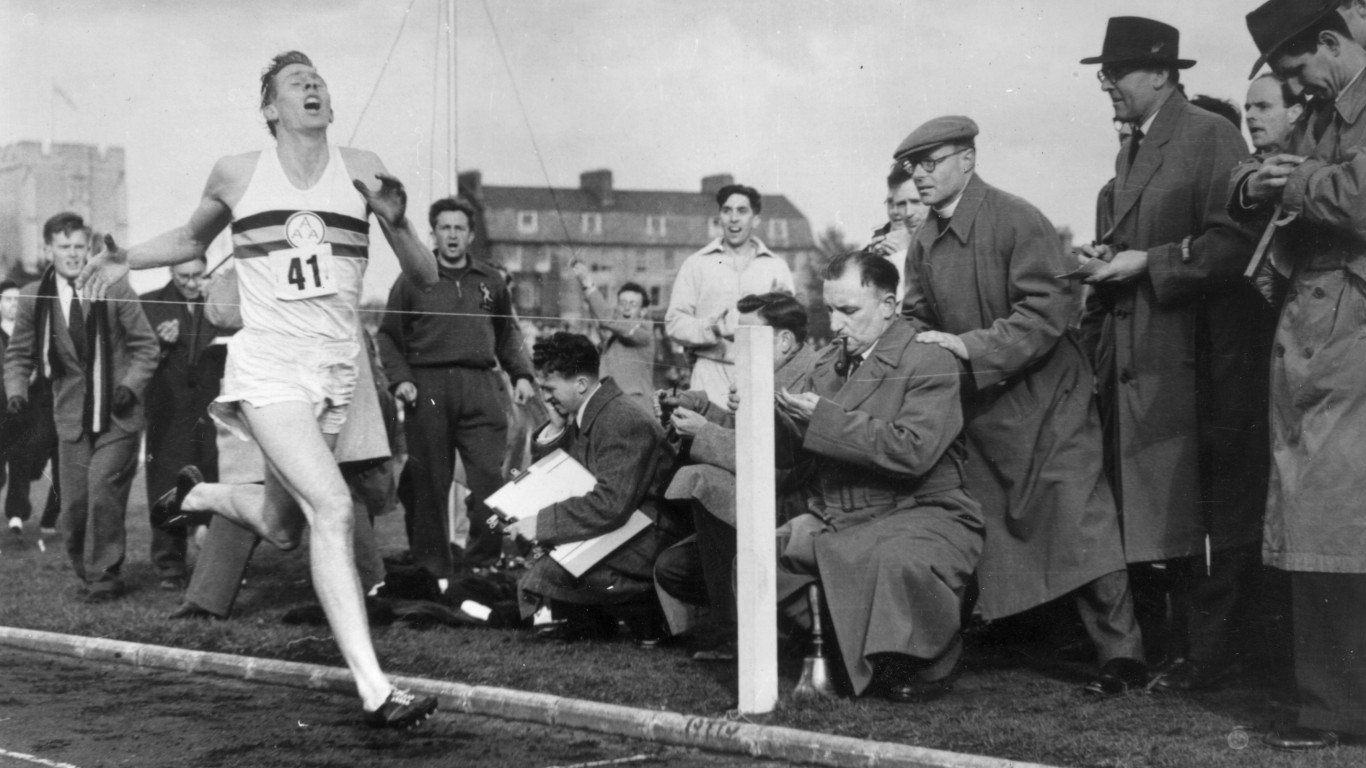
Under four-minute mile
> Year: 1954
On a cold and windy day on May 6, 1954, at Oxford University’s Iffley Road Track, Oxford University medical student Roger Bannister became the first recorded person to run the mile in less than four minutes. His achievement refuted the belief that it was not humanly possible to run that distance that fast. Bannister’s time was 3:59.4. He would go on to have a distinguished medical career as a neurologist, making discoveries in the area of autonomic failure. The current mile record has been held by Morocco’s Hicham El Guerrouj since July 7, 1999, with a time of 3:43.13.
[in-text-ad]
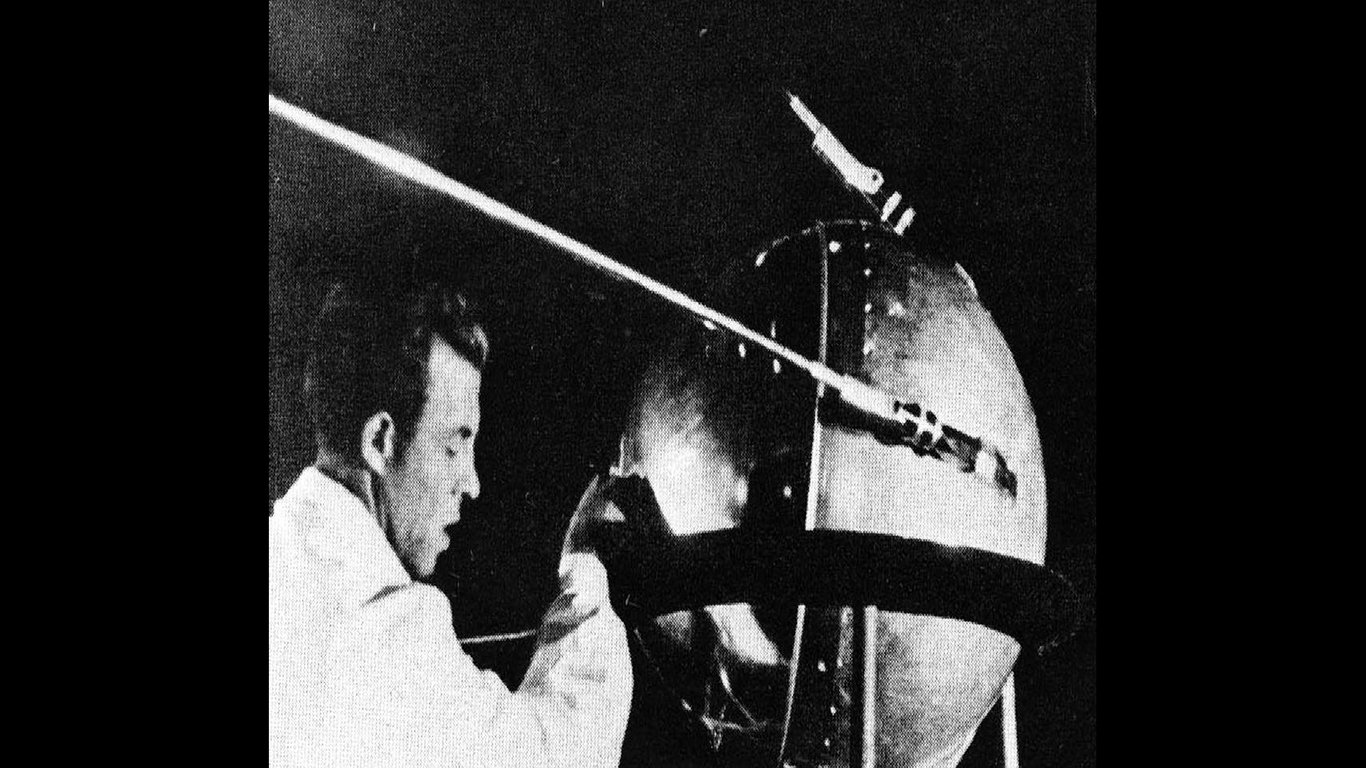
Artificial satellite
> Year: 1957
The Soviet Union launched the first artificial satellite, Sputnik I, on Oct. 4, 1957. The object weighed just 184 pounds and orbited the Earth in 98 minutes. The space shot caused considerable consternation in the United States, which had believed it was technologically superior to its communist rival. Sputnik also launched the Space Race between the United States and the Soviet Union.

Moon walk
> Year: 1969
Less than seven years after President John F. Kennedy gave his famous speech about going to the moon, on July 20, 1969, astronaut Neil Armstrong stepped off the ladder of Apollo 11’s lunar landing module onto the moon’s barren surface and uttered the now-immortal words “That’s one small step for man, one giant leap for mankind.”
Cellphone call
> Year: 1973
On April 3, 1973, Motorola employee Martin Cooper made the first cellphone call, standing outdoors in Manhattan, to Dr. Joel S. Engel, head of competitor Bell Labs in Murray Hill, New Jersey. Cooper made the call on a Motorola DynaTAC, a device that was nine inches long, had just 35 minutes of talk time, and took 10 hours to recharge. Cooper’s call would have seismic cultural implications for society that are still being felt.
[in-text-ad-2]
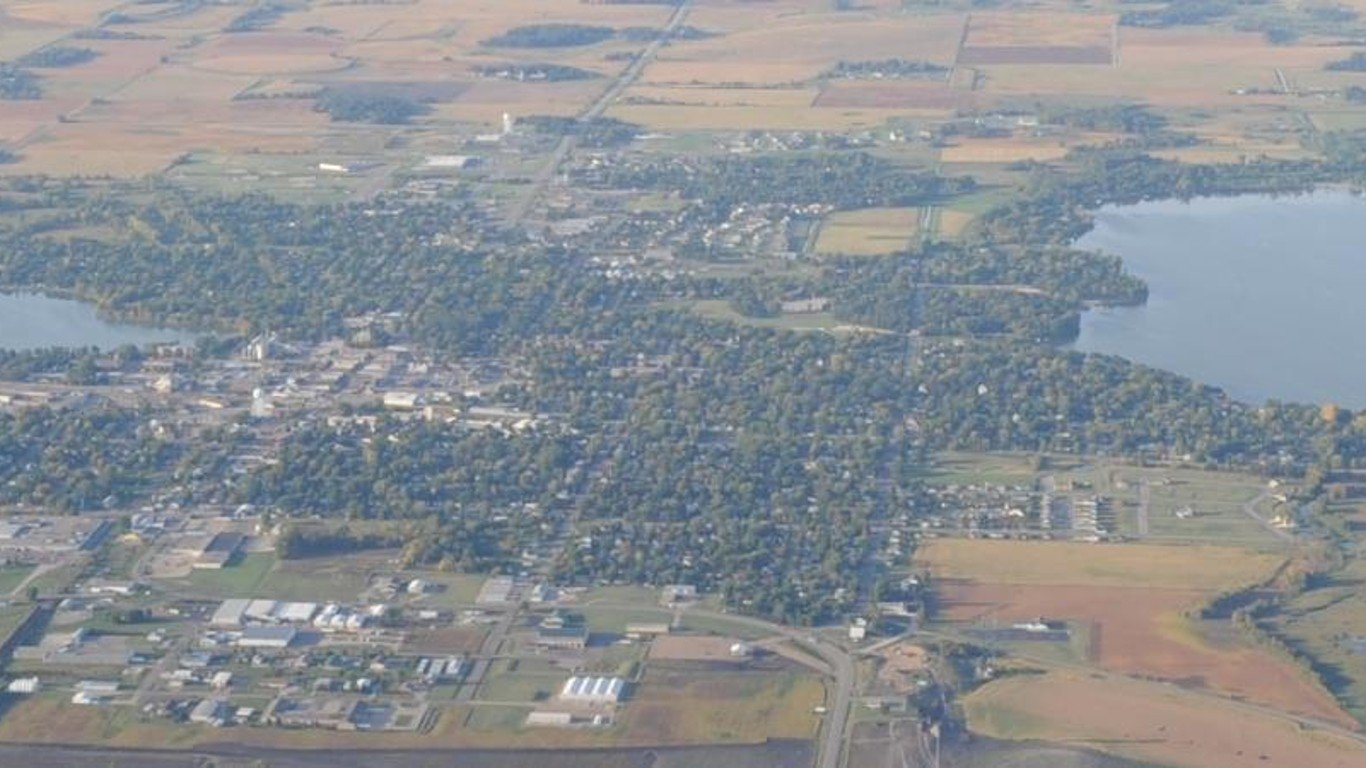
Walking around the world
> Year: 1974
Dave Kunst of Waseca, Minnesota, at 35 years old, became the first verified person to circle the globe on foot, completing the more than four-year odyssey on Oct. 5, 1974. Kunst went through 21 pairs of footwear to complete the 14,500-mile journey, crossing four continents. He began his trek with his brother John. He and his brother were attacked by bandits in Afghanistan in 1972. John was killed and Dave was wounded, but after returning to Minnesota to convalesce, he resumed his journey in Afghanistan with another brother, Peter, who eventually dropped out. Kunst completed the journey alone.
Essential Tips for Investing: Sponsored
A financial advisor can help you understand the advantages and disadvantages of investment properties. Finding a qualified financial advisor doesn’t have to be hard. SmartAsset’s free tool matches you with up to three financial advisors who serve your area, and you can interview your advisor matches at no cost to decide which one is right for you. If you’re ready to find an advisor who can help you achieve your financial goals, get started now.
Investing in real estate can diversify your portfolio. But expanding your horizons may add additional costs. If you’re an investor looking to minimize expenses, consider checking out online brokerages. They often offer low investment fees, helping you maximize your profit.
Thank you for reading! Have some feedback for us?
Contact the 24/7 Wall St. editorial team.
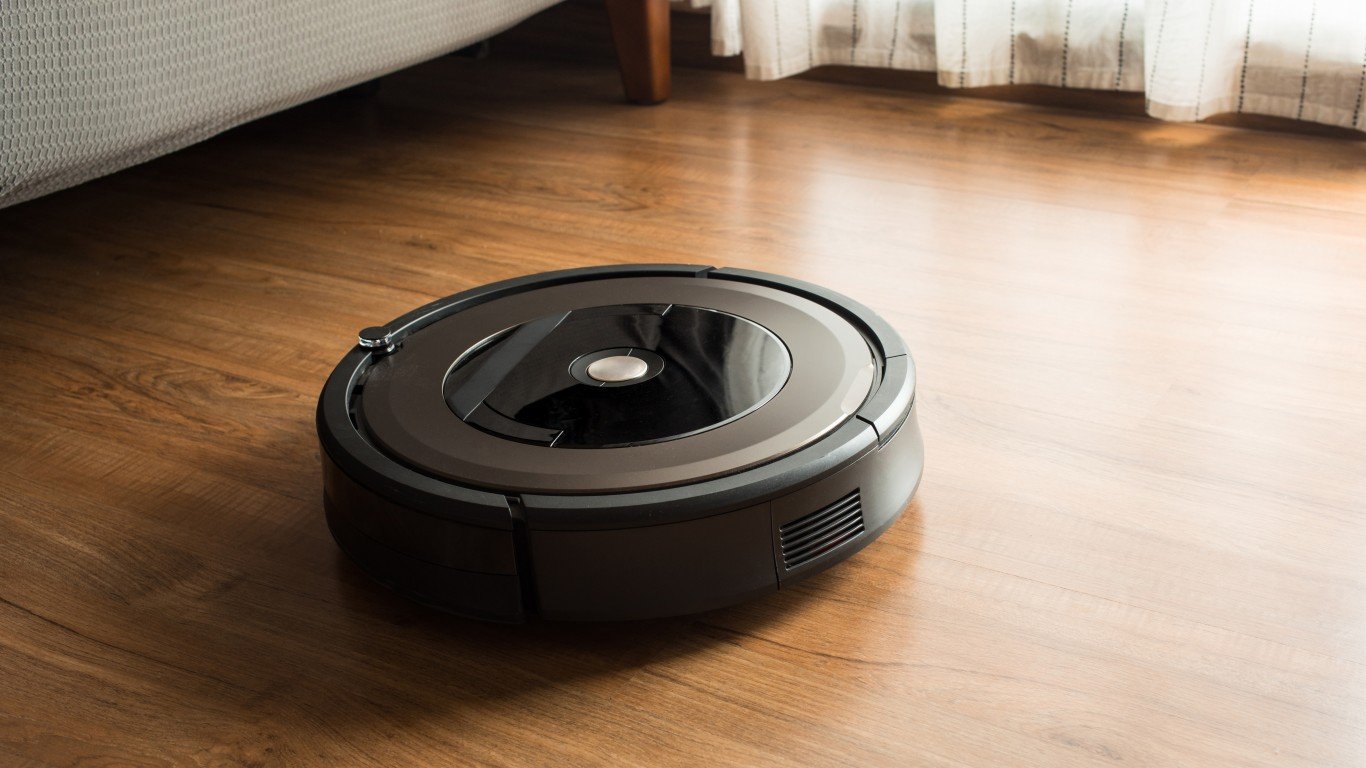 24/7 Wall St.
24/7 Wall St.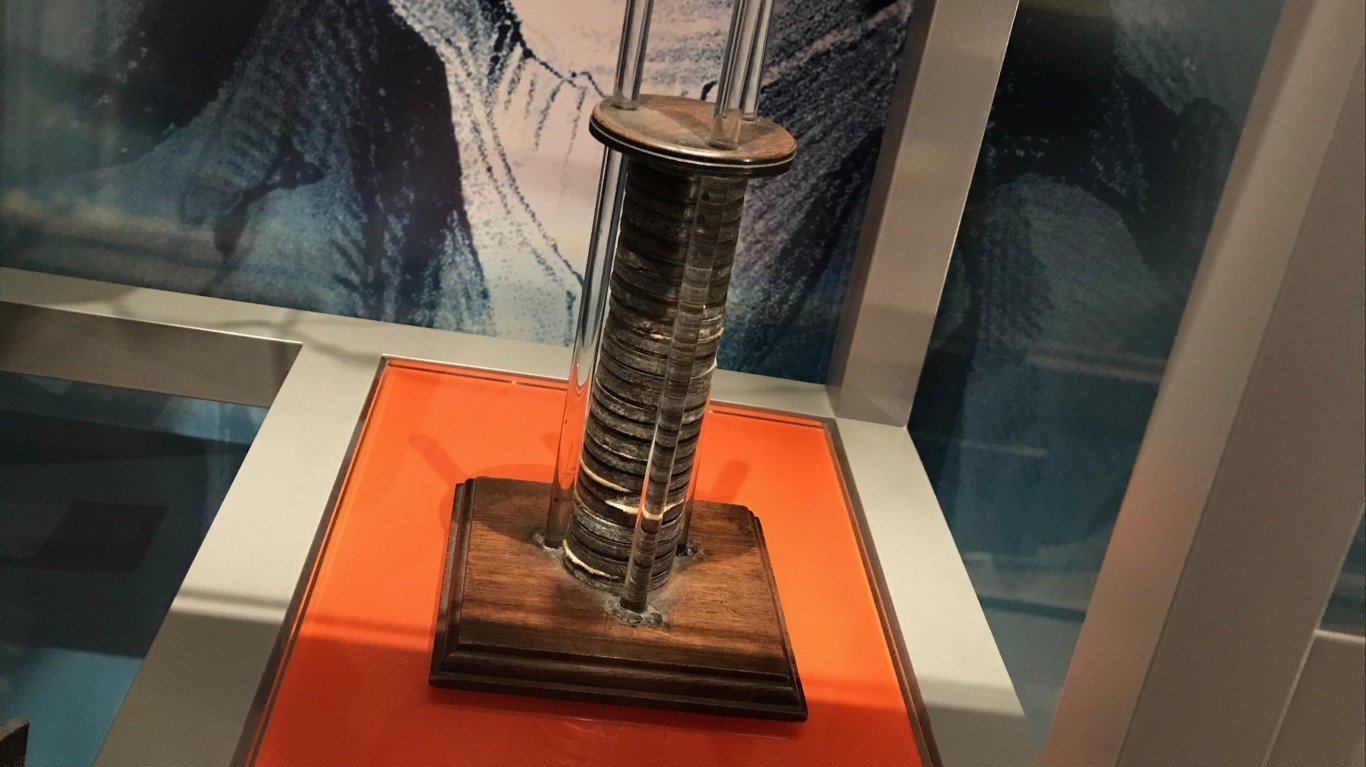
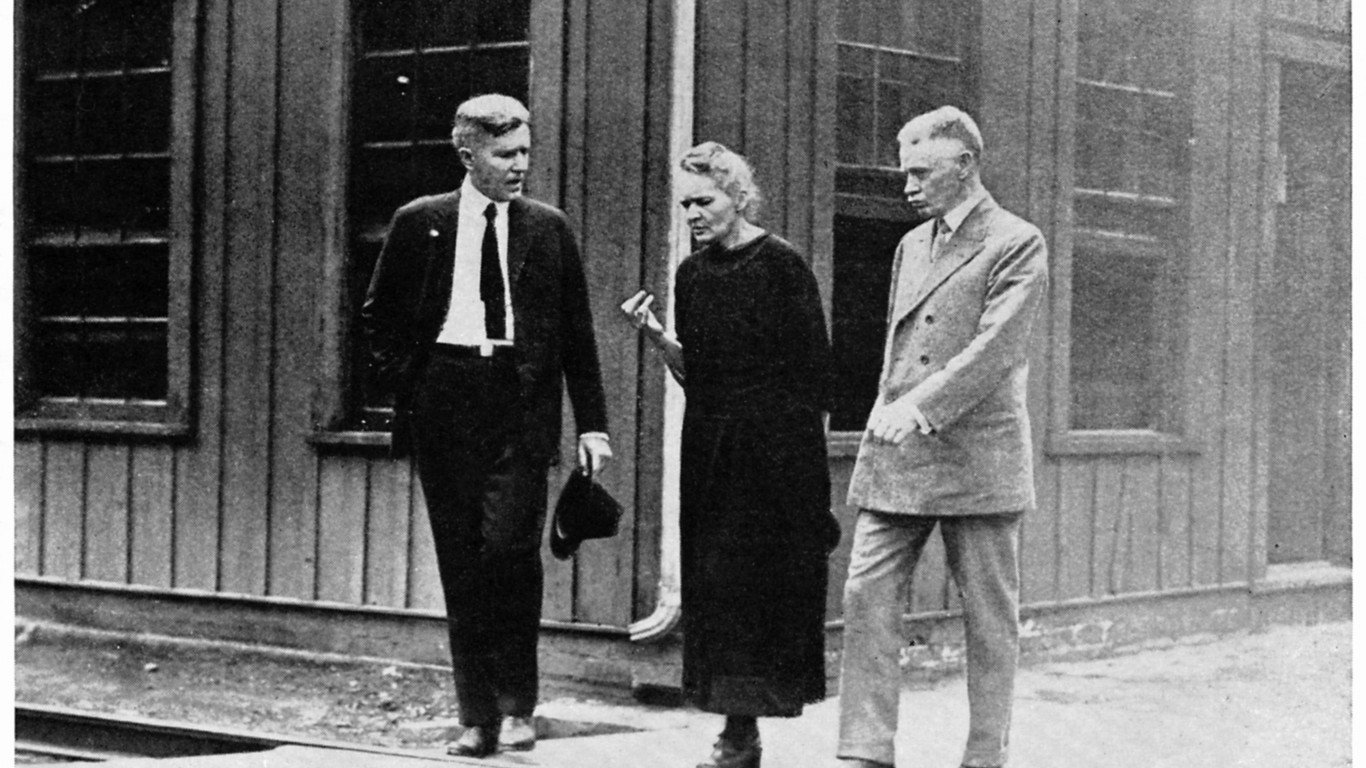 24/7 Wall St.
24/7 Wall St.



